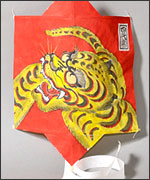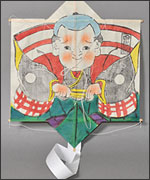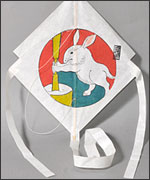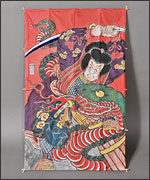Kasen-dako (picture kite) (Tendo City)
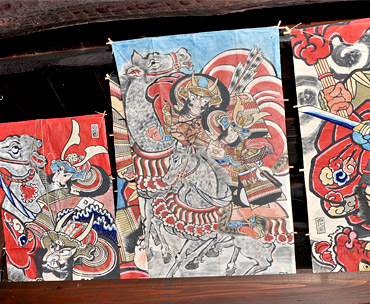
History/Outline
A member of the Abe Family discovered woodcuts and drafts in the back of a closet, making it possible to reenact the family's historical methods of kite-making.
During the Tenpo period (1830-1843) Abe Kasen, who ran a Tatami mat shop at Yoka-machi in Yamagata City, began making Kasen-dako, a type of kite featuring pictures. In 1977 the 3rd generation owner Tahiko Abe discovered dusty
kite making tools, allowing him to remake Kasen-dako according to his family's tradition. Now the newest generation of the family has inherited this kite-making business in the Midare-gawa district of Tendo City.
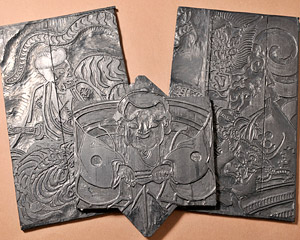
Techniques/Characteristics
The unique style of Kasen-dako, nurtured by Yamagata's customs and climate, features vivid colors and auspicious patterns praying for happiness.
With elaborate and serene Kabuki as well as Ukiyoe-like patterns, a main feature is a pure red color, called "Kasen-no-aka" (kasen's red).
Shape variations include Kaku-tako (square kite), Koma-tako (a kite shaped like a top) and Kurage-tako (jellyfish-shaped kite). Popular kite designs include Gen-pei Gassen (the battle of Gen-pei) Musha-e (samurai warrior painting taken from a Kabuki drama), and other auspicious patterns of Fukusuke, Daikoku, Usagi (rabbit), Kuma-kin, Koi-taki (a carp rising over a waterfall) and Tora-ou-maru.
Shape variations include Kaku-tako (square kite), Koma-tako (a kite shaped like a top) and Kurage-tako (jellyfish-shaped kite). Popular kite designs include Gen-pei Gassen (the battle of Gen-pei) Musha-e (samurai warrior painting taken from a Kabuki drama), and other auspicious patterns of Fukusuke, Daikoku, Usagi (rabbit), Kuma-kin, Koi-taki (a carp rising over a waterfall) and Tora-ou-maru.
Main Products
●Koma-dako (top-shaped kite with tiger painting) ●Koma-dako (top-shaped kite with Fukusuke, another auspicious painting)
●Kurage-dako (jellyfish-shaped kite with rabbit painting) ●Kaku-dako (square kite with snake painting)
●Kurage-dako (jellyfish-shaped kite with rabbit painting) ●Kaku-dako (square kite with snake painting)
